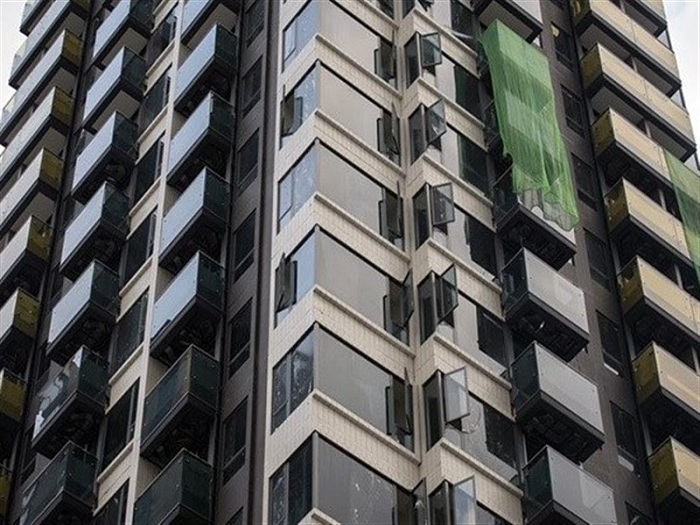An analysis of thirty-five-meter shelves; we are sixty to zero behind the United States!

The housing programs of the country's economic team in the major years after the revolution have caused Iran to lose hard against the Americans in the field of housing, unlike space programs and new technologies.
According to the Iran International Stone Fair, Abdul Reza Golpayegani, Tehran's deputy mayor for urban planning and architecture, unveiled plans that showed; We are ten kilometers ahead of the atmosphere.
Life is not just about launching a satellite and putting it in orbit, life begins at home and in the living room, and the designers of these brilliant space programs must finally settle down somewhere.
Golpayegani, the deputy mayor of Tehran for urban planning and architecture, spoke about programs that show a larger and more important doctrine, and that is nothing but the worst kind of resource management, which results in making people bitter with difficult living conditions and the appearance of Iranian cities. In particular, Tehran is a cubic and soulless cube structure. Neither Islamic-Iranian life nor human life at all!
Paying attention to the points raised by Golpayegani shows that the country's housing decision-makers have a basic idea of creating the appearance of work and have consolidated answers to present to the people in Austin.
"People who are worried that the thirty-five-meter scale is not in line with the Iranian way of life and culture should look at the Kan neighborhood, where the houses are small, but exactly like the Iranian architecture and style of Iranian culture," said the country's top housing director. ... According to this plan, each building is allowed to make twenty percent of its units small in scale and a maximum of thirty-five meters.
That is a maximum of thirty-five meters and not necessarily thirty-five meters! And interestingly, it is referred to the Cannes neighborhood, which is a more modern type of Halabiabad and a suburb that you can see in the picture.
The image below shows the Kan neighborhood, which, according to the deputy mayor of Tehran, is an example of the Iranian and Islamic lifestyle.
From the space program to the cages of thirty-five meter houses
In the United States, ninety-five percent of homes are built as villas, and in the last 30 years, an average of one meter has been added to the average American living space each year. That is, the average American home is 30 meters larger than the previous generation in the last thirty years.
While the United States had a population of about 2.8 million by the 1990 census, which has now grown to 3.3 million, it has not shrunk its homes under the pretext of population growth. In other words, the population of the United States has increased as much as the current population of Iran in the last thirty years, and the housing situation of the people is better than before.
The reaction of American policymakers to this increase in population has been to increase per capita living, and there may be a causal relationship in the possibility of living in a better environment and a desire to increase the population further.
This statement can be compared to the policy of Abbas Akhundi, Gholam Hossein Karbaschi and now Pirooz Hanachi, who dream of a new dream for the Iranian people every day.
In the 1997 election campaign, then-President Abdullah Jasbi Yar Ghar, a 30-year-old president of the Azad University, said of his plan to build 70-square-meter apartments that no one believed he would be operational (at the time in the vast majority of Iranian cities). The apartment was an unknown phenomenon and people lived in villa houses), but the program not only became operational, but was to be reduced to thirty-five meters.
While Iran, like the United States, is a vast country with a wide variety of climates, its housing policy has been designed since 1991 to suit its own circumstances, such as Japan and even worse than Japan, a country with a population of 1206 million and an area of approximately 3,300. Seventy-eight thousand square kilometers consists of thousands of unused islands.
Comparing the country's space policy with housing policy shows what mismanagement of the people of Carnabald, etc., brings to the people. During the Sarpol-e-Zahab earthquake, the jihadi forces were able to easily and seemingly operate new seemingly impossible tasks (with the logic of Tehran Municipality management) easily.
Engineer Saeed Ghasemi, in charge of housing construction in the earthquake-stricken areas with new technologies, says that in the way that he and the jihadists have used, each meter of housing is prepared with very good quality (with World Day standards) at a price of five hundred and fifty thousand tomans in less than a month. That is, if there is no news about bank loans or other methods of the bank to buy a house, it is possible to increase the level of welfare of the Iranian people with a modern house with several times more quality with less than one hundred million tomans.
It is better to ask Mr. Golpayegani why, instead of making complicated plans in the darkrooms of Tehran Municipality to send the Iranian people into thirty-five-meter cages, he does not think of updating housing construction methods to prevent construction with Take the ancient bricks.
Comparing the situation of the country's space programs with the management of Tehran Municipality and the country's housing policy makers in the last forty years shows why we have flown in space four hundred and twenty kilometers and become one meter smaller on Earth every year; Zero; every year, one meter is added to the American housing and one meter is reduced to the Iranian housing; we are behind the United States.
* Tasnim










